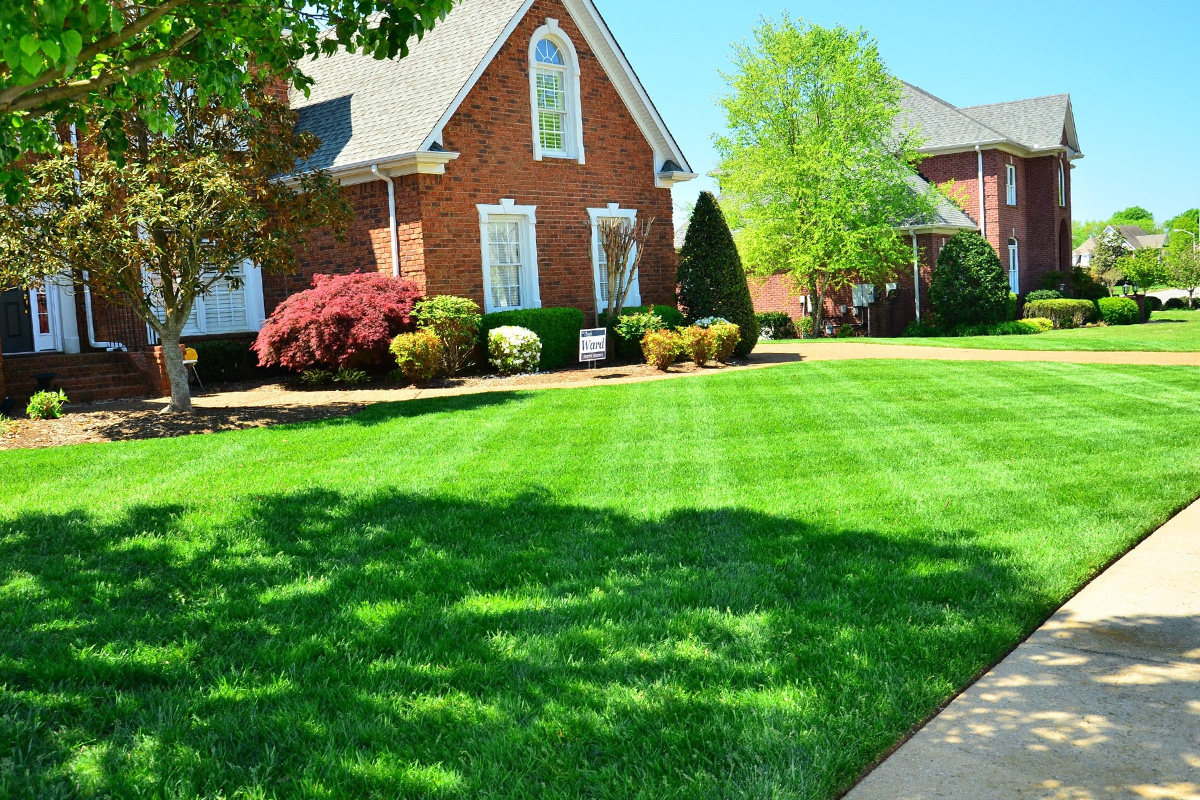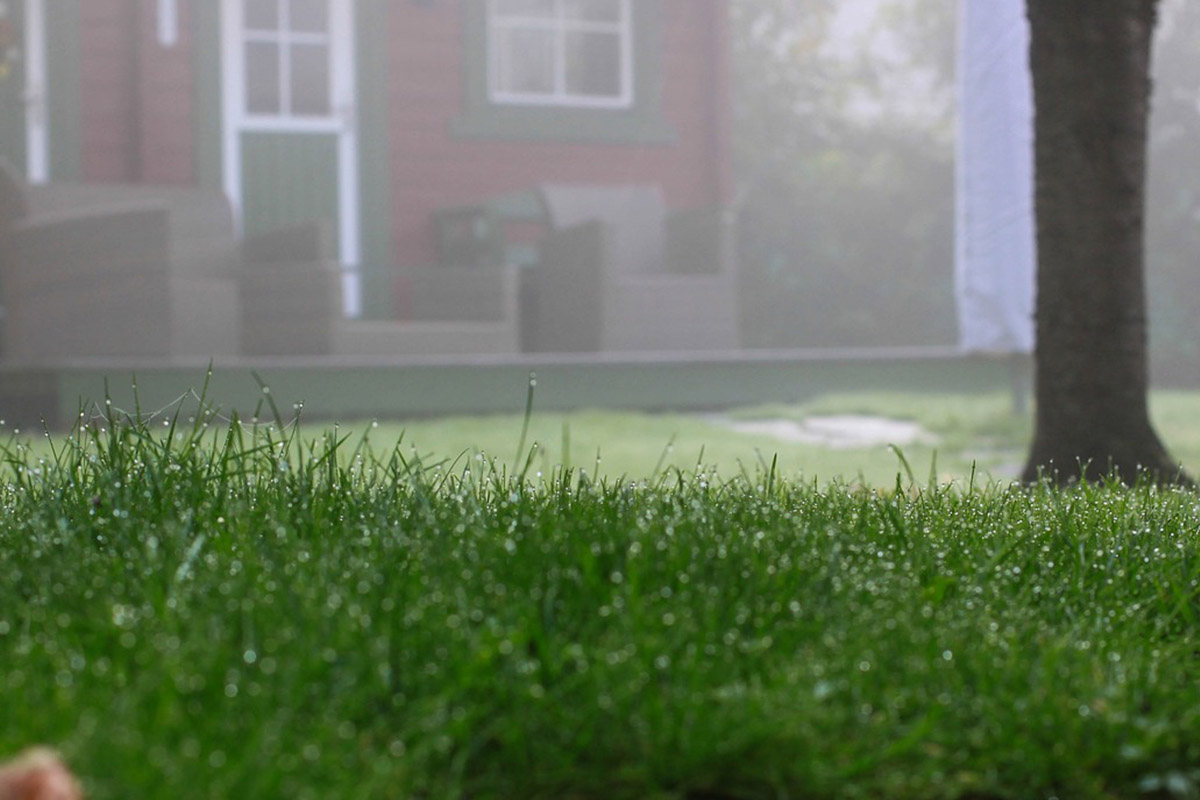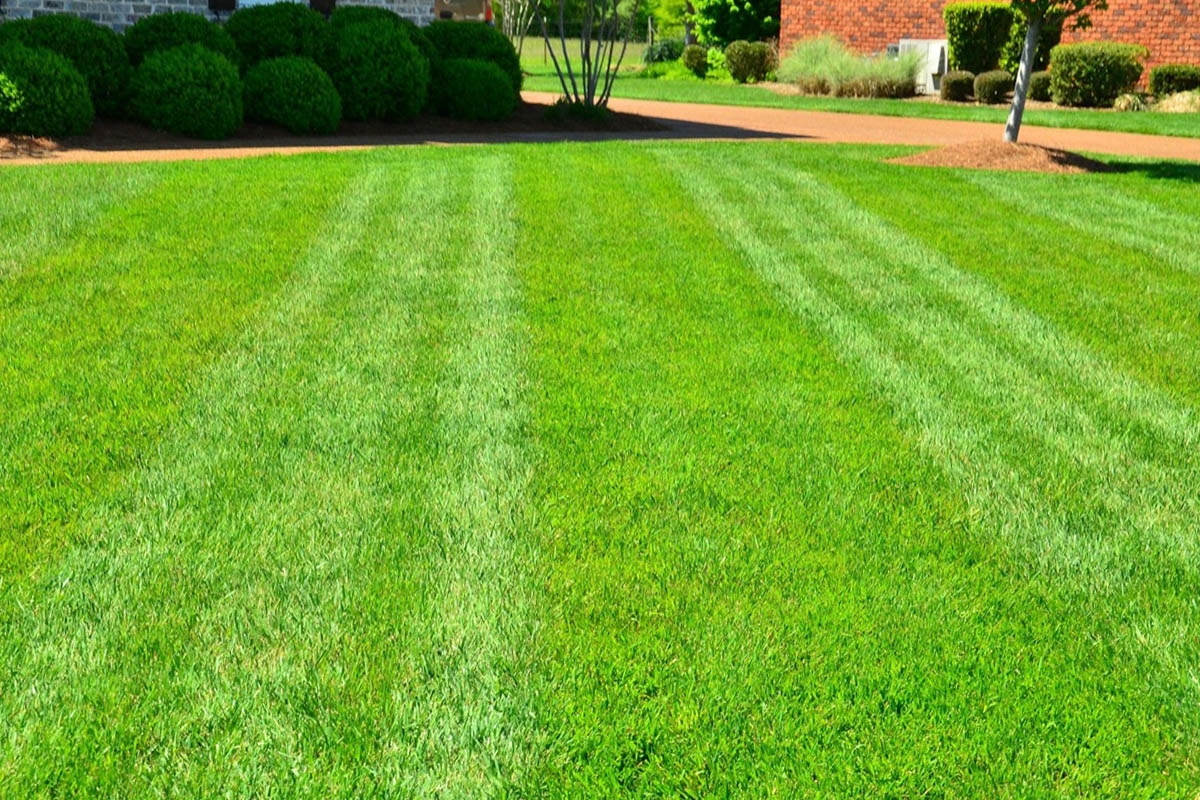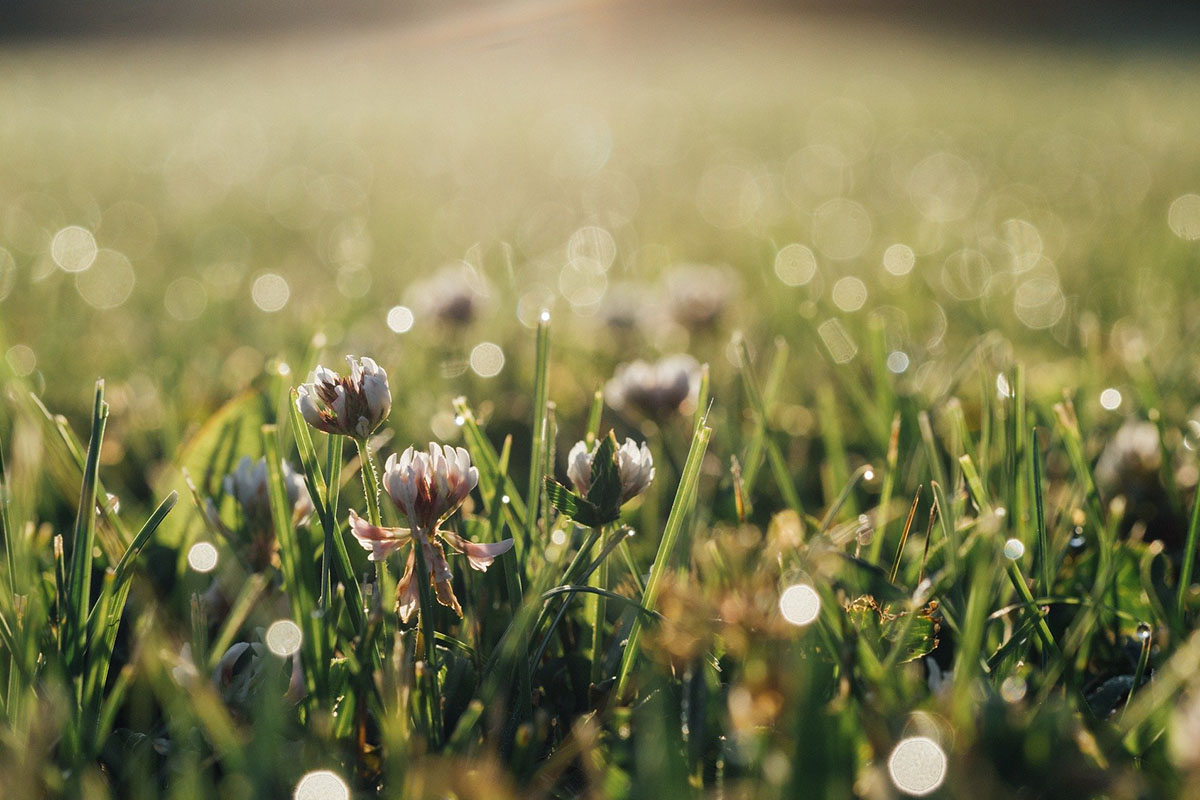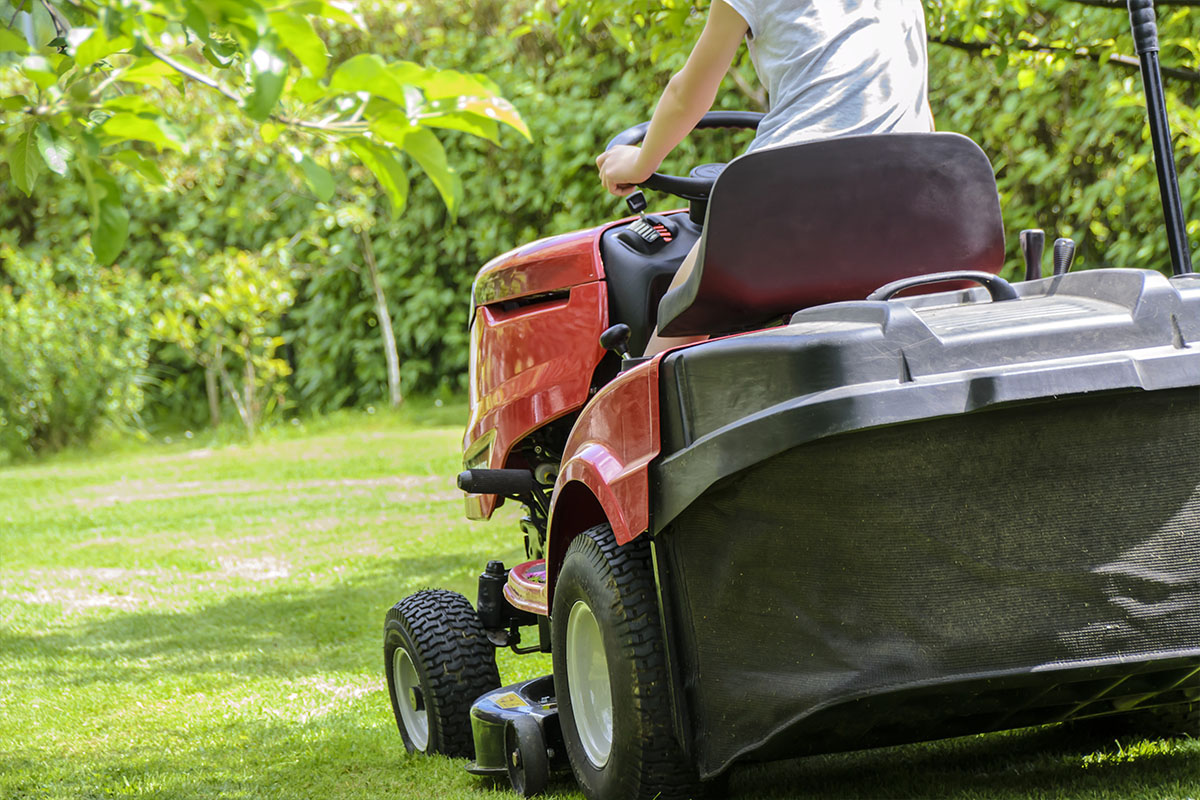While spring started off unseasonably warm, it slowed to a halt with much cooler than normal temperatures throughout most of May. Now as we come off of nearly a week of torrential rains, many of us may be wishing for warmer and drier weather!
Last month here on the blog, we discussed the differences between cool season and warm season grasses and the pros and cons of each specific to our area (Blacksburg, Christiansburg, Radford, Pulaski, Giles, VA, Bluefield, WV, and beyond.) We concluded that most homeowners opt for cool season grasses because of these reasons.
As a follow up, we wanted to dive deeper into some of the different types of cool season grasses, along with their pros and cons. On the whole, cool season grasses are better established in the fall, which is why we generally recommend fall, not spring, as the best time to seed your lawn. Just coming off Memorial Day, most of us are in summer mode; however, fall will be here before we know it! Now is a great time to be thinking about what kind of grass is best to plant if you are considering trying to repair bare and dead spots in your lawn.
When considering the best type of grass for your lawn, you’ll want to look at the specifics of your yard as far as sun and shade and how much traffic it gets (pets, kids, etc.). We recommend you consider these factors when looking for the best grass:
With this in mind, check out the pros and cons we’ve compiled—based on several Virginia Cooperative Extension publications—for each of the main types of cool season grasses:
Types of Cool Season Grasses and Their Pros & Cons
Kentucky bluegrass
| Pros | Cons |
|---|---|
|
One of the most attractive cool-season grasses because of its dark green color and fine-medium leaf blade |
Considered to be moderate to high maintenance because it’s not as hardy as some other cool season grasses |
|
Can be mowed lower than some other cool season grasses (1.5 to 2.5 inch cutting height) |
Requires “full sun” and does very poorly when it receives less than 6 hours of full sun per day |
|
Aggressive spreading habit, allowing it to grow to fill in bare spots in the yard |
Due to the aggressive N requirements and its growth/spreading habit, it likely will have to be dethatched every 2-3 years. |
|
Exceptional cold tolerance |
Lower heat tolerance than other cool season grasses. Enters summer dormancy under extreme drought in order to survive |
|
Well adapted to our region of Virginia |
Can be susceptible to diseases of dollar spot, red thread, and rust if it doesn’t receive enough N fertilizer |
|
Slow to germinate (14-21 days); complete establishment usually takes months |
Tall fescue
| Pros | Cons |
|---|---|
|
Very hardy and durable; lower maintenance than Kentucky bluegrass |
Requires higher mowing height than other cool season grasses (2-3 inch regular cutting height, and performs best in the summer by mowing it even taller) |
|
More flexible N fertilization needs; few thatching problems |
Susceptible to Rhizoctonia blight (brown patch) |
|
Performs well in full sun and moderate shade |
Does not perform as well in significant shade |
|
Germinates quickly (5-14 days) and is readily available as sod |
|
|
Well adapted to our region of Virginia |
|
|
Deepest root systems of any cool-season grass, allowing it to utilize water from deep in the soil and avoid drought |
Fine fescues
There are three species of fine-leaf fescues used in Virginia: hard, chewings, and creeping red.
| Pros | Cons |
|---|---|
|
The most shade tolerant cool-season grass; can handle as little as 3-4 hours of sunlight per day. |
Needle-like leaf texture is not as desirable looking for some homeowners as thicker leaf textured grasses |
|
Require very little N fertilization |
Their quality will decline if over fertilized |
|
Versatile mowing heights – can tolerate mowing heights of 1.5 to 2.5 inches, but taller heights can be used in lower maintenance lawns or “no mow” in mountain areas that are too steep to mow. |
Poor traffic tolerance; not a good choice for lawns with lots of pet and kid traffic |
|
Seed germinates pretty quickly (10-14 days) |
Somewhat slow to establish |
|
Very tolerant in dry conditions |
Typically do not fare well in persistently wet soils |
|
Well adapted to both full and partial sun conditions in our region of Virginia |
Perennial ryegrass
| Pros | Cons |
|---|---|
|
Best suited for use in full sun to moderately shaded lawns in our region of Virginia |
Susceptible to summer-time pest and environmental stresses |
|
One of the fastest germinating grasses from seed (4-10 days) and also one of the fastest to establish a dense canopy |
Not normally planted by itself (mixed with other types of seed instead) |
|
Mature grass has excellent wear |
Not very heat and drought tolerant |
|
Tolerates some of the lowest mowing heights possible (1 to 2.5 inch recommended cutting height) |
|
|
Considered an attractive choice because of its dark green color, waxy leaves, and “striping effect” when mowing it |
Many times, packaged grass seed is a mix of two or more of these types of seed to maximize the best features of each. For example, bluegrass and ryegrass seed combinations are very common to maximize the quick establishment of the ryegrass and the long-term creeping characteristic of the bluegrass. “Sun and shade” mixes are typically bluegrass for the sun and fine fescue for the shade.
If you want to get into the nitty gritty of the best kind of grass varieties for your lawn, you can check out the Virginia Turfgrass Variety Recommendations published by VCE. This annual document gives recommendations from the turfgrass experts at Virginia Tech. Click here to see the 2019-2020 recommendations.
Like we said, if you have bare and dead spots in your lawn, and you don’t want to worry about doing the work of seeding yourself, give Green Care a call today. We can arrange to fit you into our schedule for a core aeration and overseeding this fall!

